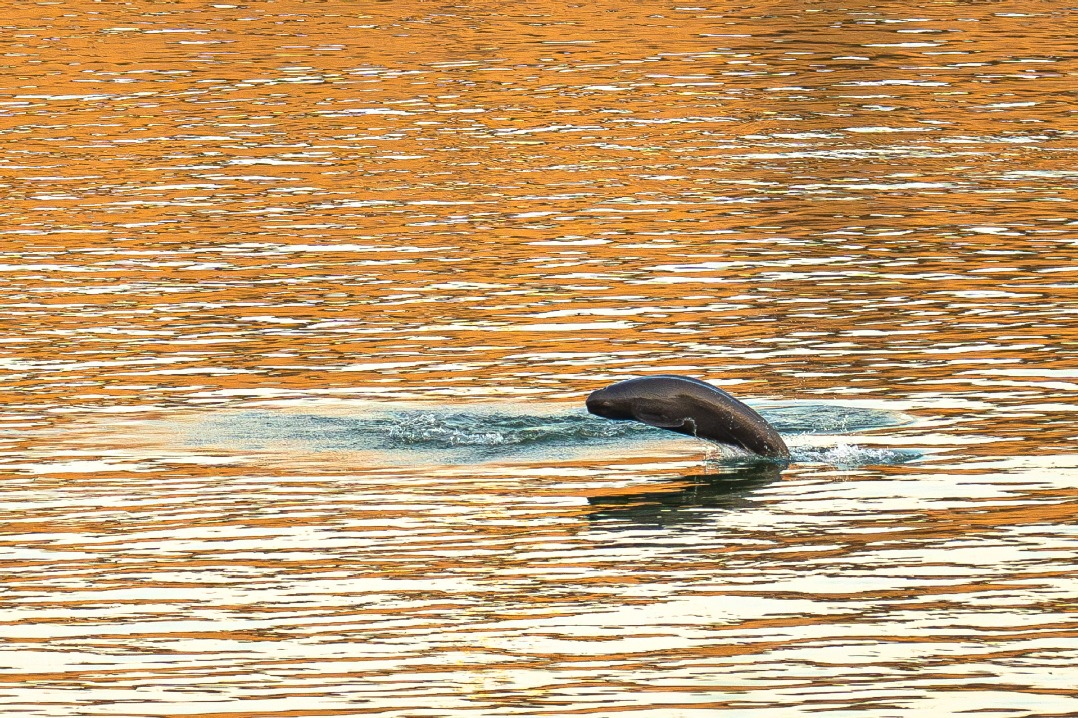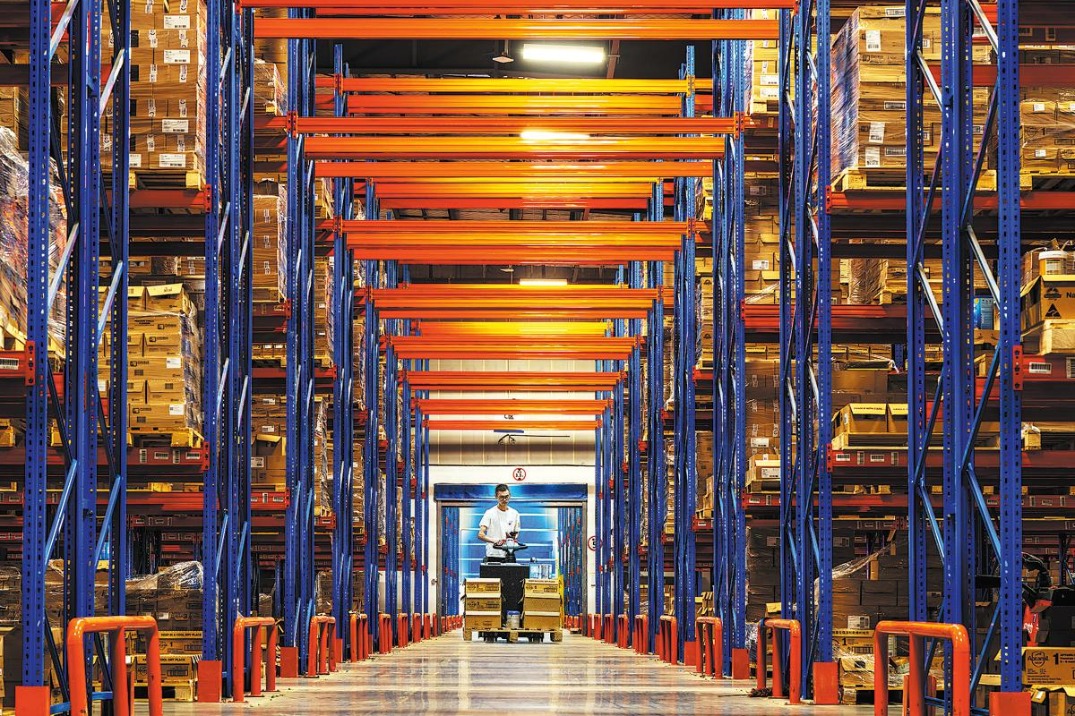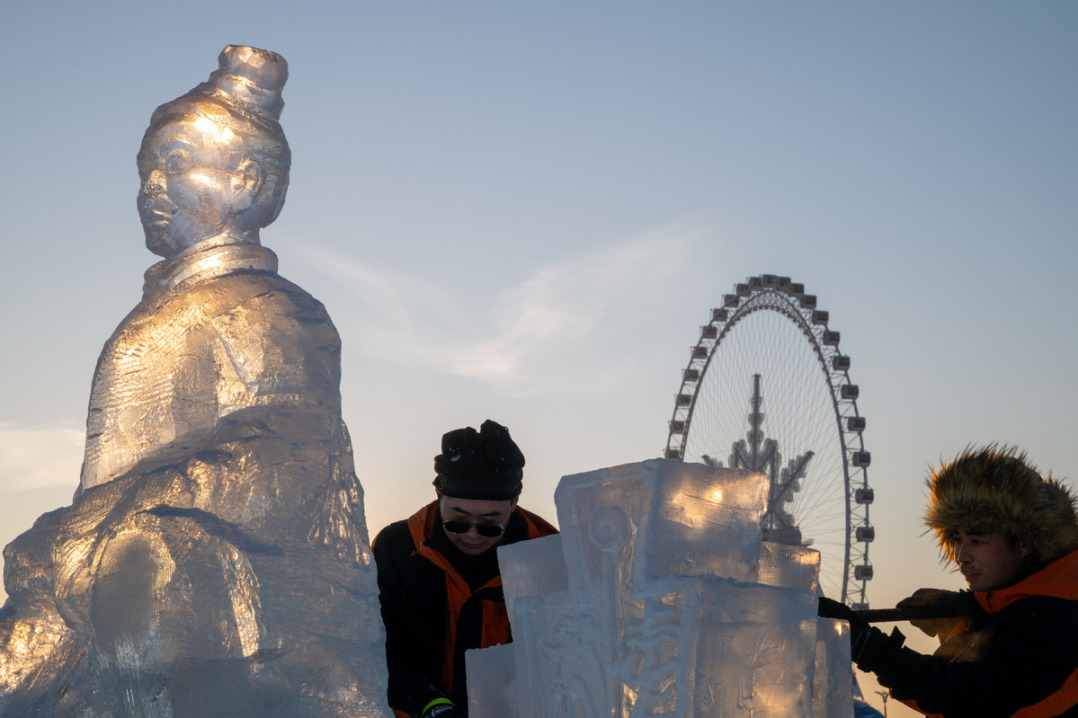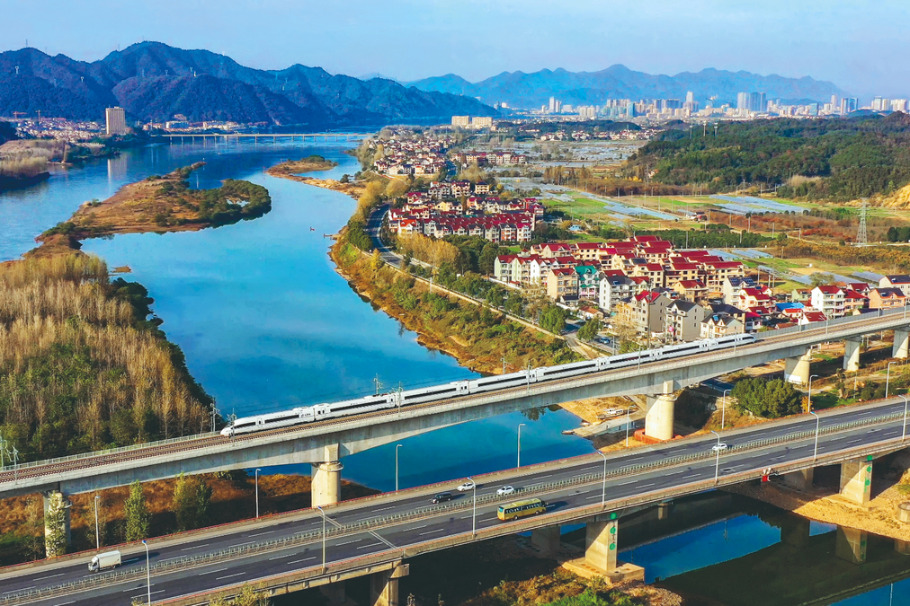Country completes first cross-sea span to carry vehicles, trains in Fujian
By Cheng Si in Beijing and Hu Meidong in Fuzhou | China Daily | Updated: 2019-09-26 09:50

Construction of the nation's first cross-sea bridge carrying both vehicles and trains was completed in East China's Fujian province on Wednesday. The span is projected to open to traffic next year, according to the China Railway Major Bridge Engineering Group.
The dual-use bridge, for which construction began in November 2013, is designed to support six lanes of vehicles with a maximum speed of 100 kilometers per hour on its upper path, and two tracks carrying trains traveling up to 200 km/h below.
The bridge connects the provincial capital, Fuzhou, with Pingtan Island, an experimental zone that once struggled with poor transportation, the release said.
According to the release, the bridge will help reduce time traveling from Fuzhou to Pingtan Island to half an hour, which is of great significance to the economic development of the areas it connects.
The 16.3-kilometer bridge starts at the province's Songxia town-passing through four islands-and ends at Pingtan Island off the east coast of Fujian, according to Zhang Hongxin, project manager with the group headquartered in Wuhan, Hubei province.
Construction work on the bridge was very difficult because of the harsh geological conditions in the sea area, said Gao Zongyu, chief engineer with the China Railway Major Bridge Reconnaissance and Design Institute.
He said that the Taiwan Straits, with powerful windstorms, posed a great challenge to the construction team.
"The sea area there is quite complicated," he said. "It's a place where wind force, wave height and wave force are 10 times higher than the inland rivers. Also, there are over 310 days with strong gales each year. It's the world's first cross-sea bridge to be built under such bad conditions."
New materials and advanced equipment were put into use for the bridge's construction work, said Wang Donghui, chief engineer of the bridge project.
"After two years of research, we could report the conditions of winds, waves and ocean currents three days in advance, which aided the construction work," he said. "Advanced equipment was used, including a new hydraulic-power drilling machine."
























